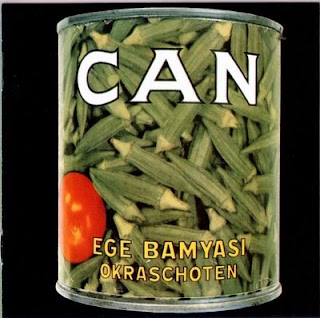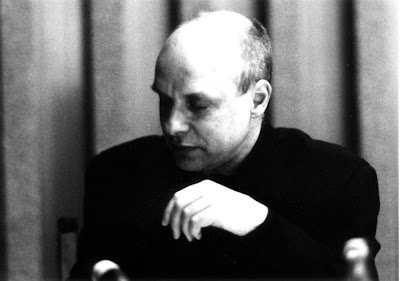 |
| Television Personalities playing live |
 So the story begins at the discount bookstore. I was flipping through records and came across the popular Teenage Filmstars album Star (1992 Creation Records). The price was right, so I purchased it. I’ve always been a fan of Dan Treacy’s and Ed Ball’s post-punk project, Television Personalities, but so far, the later reincarnation of the artists’ side project (Teenage Filmstars) has proved disappointing, but why?? I like loud, fuzzy, textured psychedelia as much as the next person, and the band explores such aesthetics to the point of sheer fetishization. The obsessive fetishizing of 60s culture isn’t what bothers me, however; in fact, I probably participate in this social practice. I think the problem is I’ve listened to the Television Personalities for many years now, and I love their campy, minimalist take on post-punk rock. And that’s what’s missing from their later project...
So the story begins at the discount bookstore. I was flipping through records and came across the popular Teenage Filmstars album Star (1992 Creation Records). The price was right, so I purchased it. I’ve always been a fan of Dan Treacy’s and Ed Ball’s post-punk project, Television Personalities, but so far, the later reincarnation of the artists’ side project (Teenage Filmstars) has proved disappointing, but why?? I like loud, fuzzy, textured psychedelia as much as the next person, and the band explores such aesthetics to the point of sheer fetishization. The obsessive fetishizing of 60s culture isn’t what bothers me, however; in fact, I probably participate in this social practice. I think the problem is I’ve listened to the Television Personalities for many years now, and I love their campy, minimalist take on post-punk rock. And that’s what’s missing from their later project...Here’s my favorite track on the later Teenage Filmstars album; it’s entitled “Kiss Me”:

It’s good psychedelia for sure, ahead of its time in relation to the recent, neo-psychedelic revival. But it doesn’t have the enduring quality of their previous, more kitschy approach to Lo-Fi, garage-style post-punk. Their more known project, Television Personalities, began releasing singles as early as 1978. Their debut album, And Don’t the Kids Just Love It, was recorded in 1980 and released in 1981 on Rough Trade. It’s rawness, minimalism, and irony is almost too much, and as a result, it’s an awesome album!!! Check out the opening track, “This Angry Silence,” of their debut full length:
It’s like early Beatles-y Brit Pop mixed with the irony of post-Sex Pistols music culture. In other words, it’s the songs of innocence and songs of experience all in one pop song formula.... Incredible!
 The Television Personalities were (or are... I think they’re technically still together?....) the brainchild of Dan Treacy and Ed Ball. They were an English group that was very much part of the emerging Punk (and later Post-Punk) music scene. In the early years, they released singles under several varying band names: Television Personalities, Teenage Filmstars, The Times, The O Level.... By the time of their debut album, they seemed to have settled on 2 names for separate projects: TV Personalities and The Times. Later, they re-formed under the name previously (but briefly) used, Teenage Filmstars. I have always preferred the early material of their project, TV Personalities. Here’s another great track, “Geoffrey Ingram,” from the 1st album:
The Television Personalities were (or are... I think they’re technically still together?....) the brainchild of Dan Treacy and Ed Ball. They were an English group that was very much part of the emerging Punk (and later Post-Punk) music scene. In the early years, they released singles under several varying band names: Television Personalities, Teenage Filmstars, The Times, The O Level.... By the time of their debut album, they seemed to have settled on 2 names for separate projects: TV Personalities and The Times. Later, they re-formed under the name previously (but briefly) used, Teenage Filmstars. I have always preferred the early material of their project, TV Personalities. Here’s another great track, “Geoffrey Ingram,” from the 1st album:The band continued to release more albums through the 80s, each release moving more and more away from their post-punk roots, exploring instead sounds of the previous decade: namely the psychedelic 60s. My favorite moment in this transition of sound was captured beautifully in the following video, a clip I recently discovered when surfing the ole net. The song is called “The Painted Word,” and it’s from their 1985 album of the same name (Whaam! Records):
 Oh my God! That video just made my day when I discovered it. 21st century hipsters eat your heart out. You can’t get more ironically pastiche or self-consciously campy than that! Davie Crocket hats are as hip as it gets! (Ricky, you know what I’m talking about.... sorry, inside joke for a friend of the blog....) In fact, this video (and not the aforementioned record purchase) is what really inspired this post; I had to share it with my small world; hope it warms your heart as well.
Oh my God! That video just made my day when I discovered it. 21st century hipsters eat your heart out. You can’t get more ironically pastiche or self-consciously campy than that! Davie Crocket hats are as hip as it gets! (Ricky, you know what I’m talking about.... sorry, inside joke for a friend of the blog....) In fact, this video (and not the aforementioned record purchase) is what really inspired this post; I had to share it with my small world; hope it warms your heart as well.Here’s one more track from the debut TV Personalities album; it’s called “Silly Girl”:
If you like raw, Lo-Fi post-punk - like recent acts such as Let’s Wrestle or Art Brut - early TV Personalities albums are for you, especially the first one. Check it out and feel free to comment.
Teenage Filmstars:
Television Personalities:











































